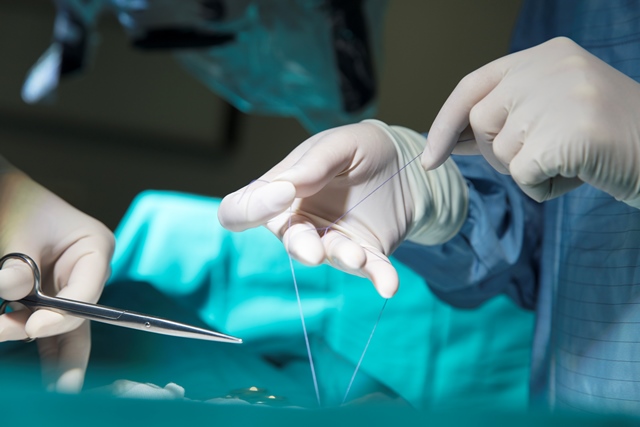Of all wounds, the surgical wound (or operating wound) is probably the most distinct. Unlike other wounds, surgical wounds are caused by an intentional medical procedure used to treat an existing health issue. The related precautions and care should guarantee optimal healing.
What is a surgical wound?
A surgical wound is classified according to two different types. They are easily identifiable and relate to the size of the incision and the location:
- Surgical wound closed by simple suture (primary intention healing). The wound edges are closed in the operating theatre using suture, staples or skin adhesive. It stands out visibly by the absence of loss of substance (skin or flesh) and it heals quickly (epidermis reconstituted in 7 days / scar consolidated after one month / permanent scar in 12 or 18 months).
- Surgical wound with directed healing (secondary intention healing). This is a wound which comes with significant loss of cutaneous tissue, with edges which cannot be brought together. The wound is deliberately left open and requires the appropriate care to help it to heal. In the event of a deep wound, a drain can be used to facilitate the evacuation of fluid.
Causes and complications
Whether they result from a minor operation or more major surgery, surgical wounds represent rupture of the cutaneous layer. Post-operatively, certain situations may halt the normal healing process, the stages of which are the same as for an acute wound.
Among the factors causing delayed surgical wound healing are:
- Wound-related factors (infection, lack of oxygen supply to the tissue, haematoma etc.)
- Factors related to the patient’s general condition (smoker, malnourished, stressed, diabetic etc.)
During the healing process, it is necessary to closely monitor the closed surgical wound and to monitor for:
- Bleeding scar tissue
- Fever
- Unpleasant smell
- Pain or hardness after a week
Surgical wound treatment
Treatment of this type of wound consists of both minimising the risks of infection and achieving an aesthetically-acceptable scar. Wound care differs according to the type of wound.
- Wound closed by simple suture (primary intention healing). The wound is covered with a protective dressing and cleaned with soap and water or saline solution. The sutures or staples are removed after 5 to 15 days.
- Suture-less wound (secondary intention healing). After removing dead or denervated tissue, nursing staff use dressings which promote healing in a moist wound environment. They are changed regularly.
And afterwards?
Some essential precautions must be taken for surgical wounds, especially healing time:
- A surgical wound should be covered with a water-resistant dressing in the shower
- The patient should not undertake intense physical exercise in the days after surgery
- The patient should lead a healthy lifestyle (no smoking, no drinking, and a healthy diet)
- The scar should not be exposed to the sun

